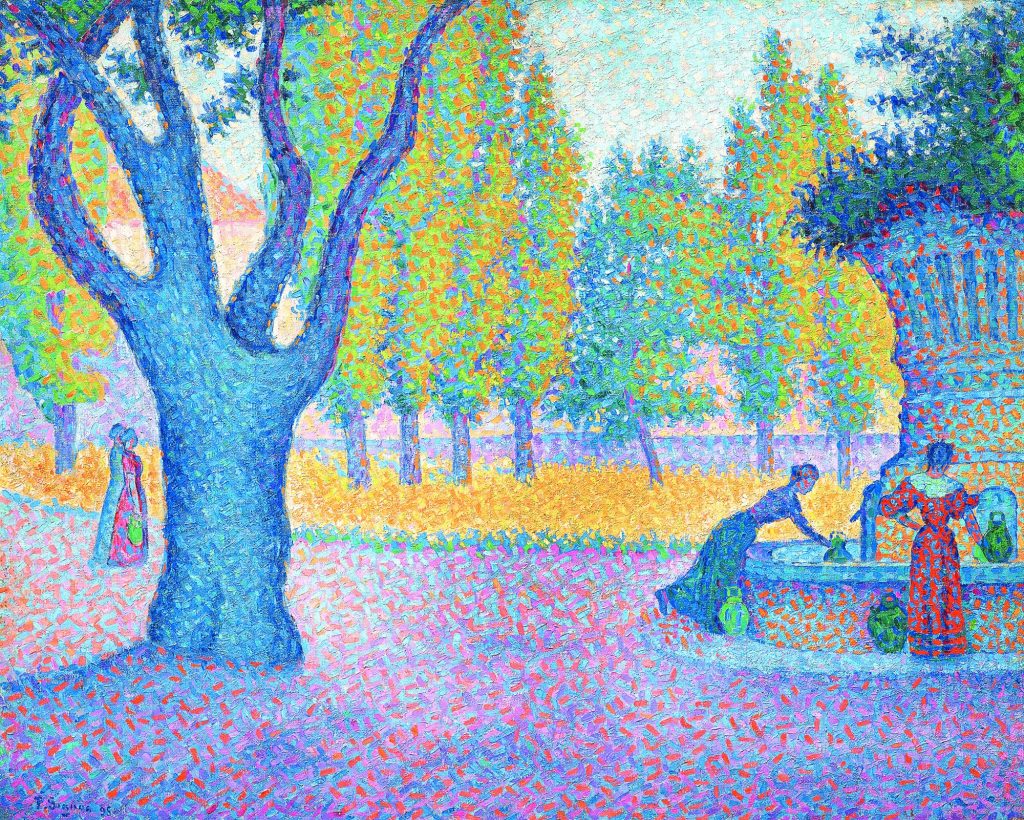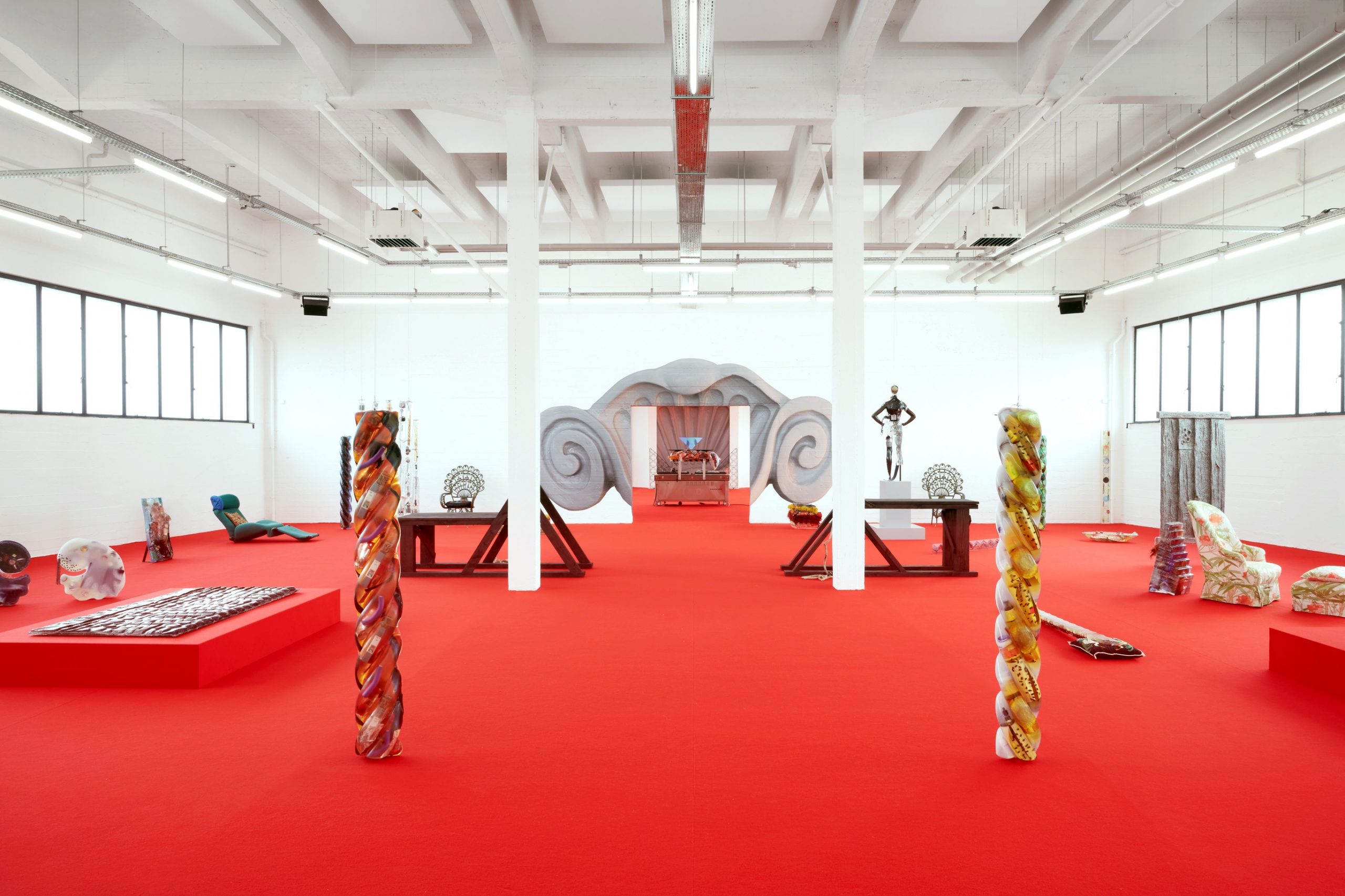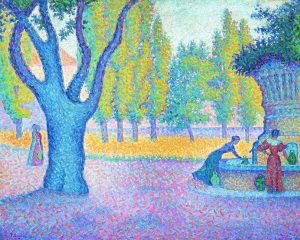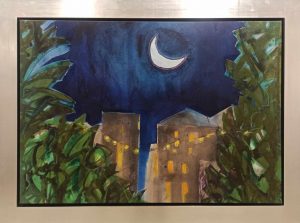The rhetorical question posed to visitors at the National Museum of Contemporary Art Athens (ΕΜΣΤ) in December 2023 is: “What if Women Ruled the World?”
This query heralds the beginning of a three-part series of exhibitions that will continue until October 2024.
The exhibitions at ΕΜΣΤ mark the first time that the museum has completely filled its spaces with artworks by female artists from Greece and abroad, as well as artists who identify as women. This project aims to “radically re-imagine what a museum would look like if instead of a few token pieces, works by women artists were the majority.”
Katerina Gregos, the museum’s artistic director and project initiator, emphasizes the significance of this move, noting that “especially in a country like Greece, where there was never a prominent organized feminist movement in the visual arts, and women artists were systematically marginalized over decades, this is both an important statement and a redressing of a major imbalance. At a time when we are witnessing a resurgence of attacks on women’s rights, the question of female empowerment and gender equality, across the board, is more urgent than ever.”
Part I of “What If Women Ruled the World”
Women, together
Women, together curated by Katerina Gregos stands as a bold statement by ΕΜΣΤ addressing a challenge encountered by museums worldwide – the under-representation of women and the urgent need for gender equality, a concern spanning all “waves” of feminism throughout the years. To depict the issue this collective exhibition features exclusively artworks by female artists sourced mainly from the D. Daskalopoulos Collection Gift to ΕΜΣΤ along with contributions from other artists. By reshaping the portrayal of its collection ΕΜΣΤ underscores museums as lively entities rather than “moribund apothecaries of the past”.
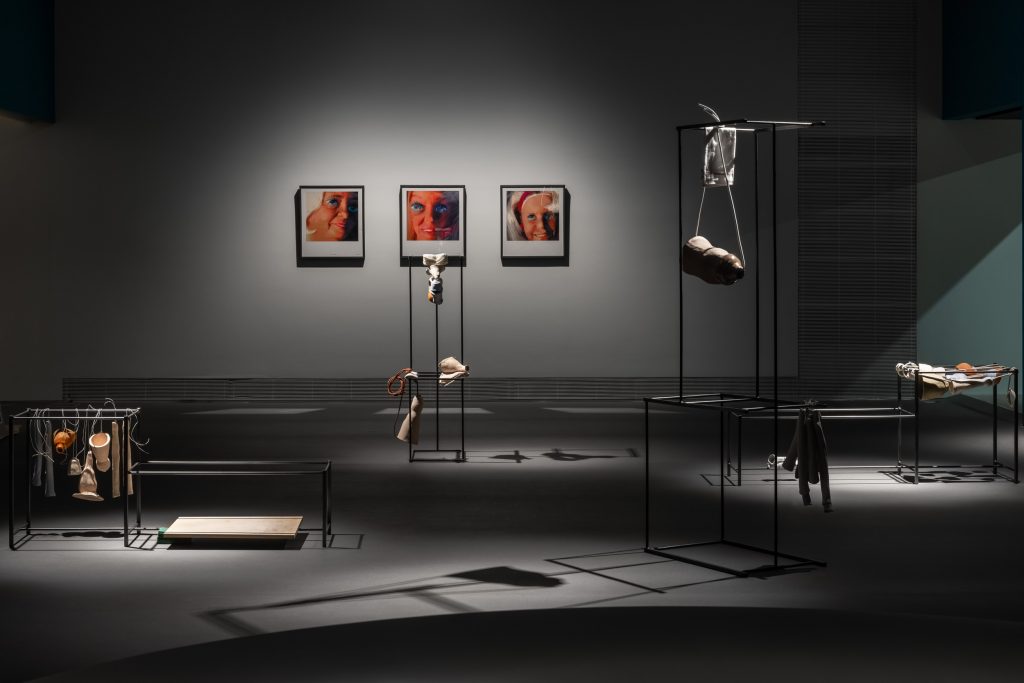
Installation view of the Collection exhibition: WOMEN, Together ΕΜΣΤ Collection, works by Paky Vlassopoulou and Despoina Meimaroglou Photo: Paris Tavitian
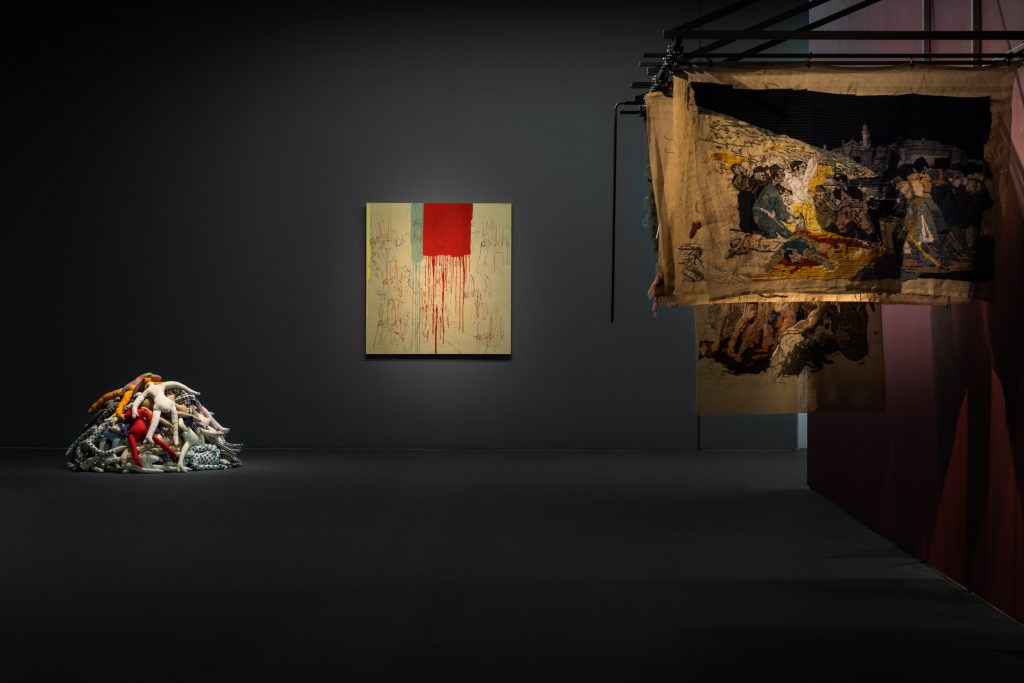
Installation view of the Collection exhibition: WOMEN, Together ΕΜΣΤ Collection, works by Maria Loizidou and Ghada Amer, Presented as part of the D. Daskalopoulos Collection Gift, and Bertille Bak Photo: Paris Tavitian
Lacking of a single thematic narrative, forty-nine artworks of female artists of different ages engage in a dialogue demonstrating common conceptual points. They inquire around topics such as gender, the human body, collective and cultural identity, sexuality, history, memory, sociopolitical issues.
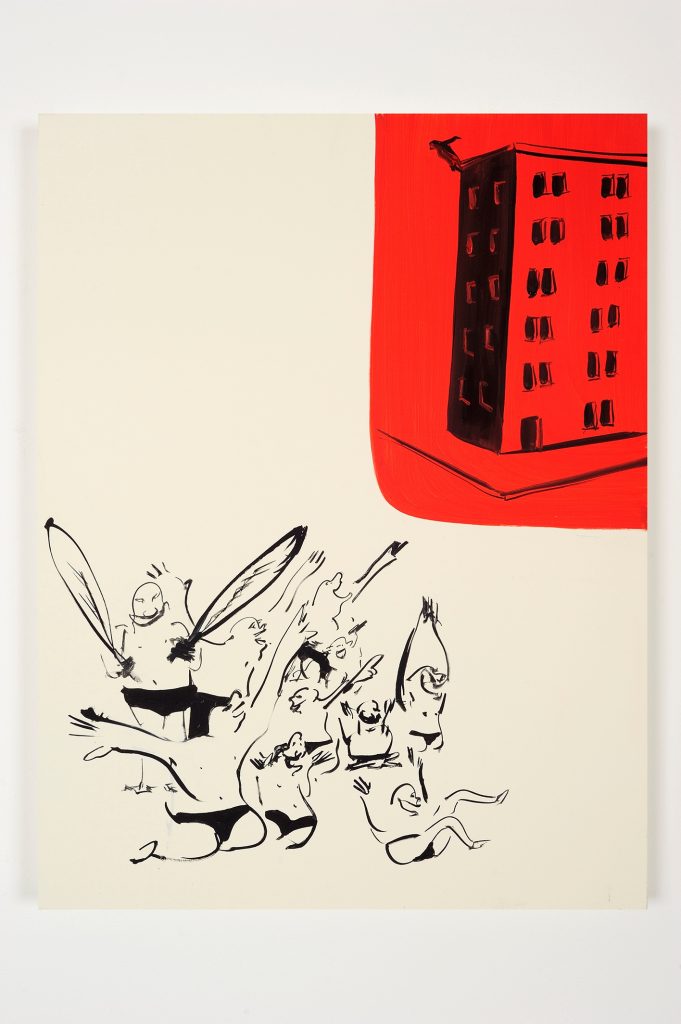
Tala Madani FLIGHT, 2011 Oil on linen 61 × 45,7 cm ΕΜΣΤ | Presented as part of the D.Daskalopoulos Collection Gift
“The Search for Happiness for as Many as Possible” by Chryssa Romanos
Chrysa Romanos (1931-2006) is renowned both as one of the most significant Greek artists and female figures in the Paris art scene of the 60’s. An expat intellectual, she is one of the first Greek artists to impact and formulate international artistic movements of her era closely associated with the influential critic Pierre Restany and the Nouveau Réalistes.
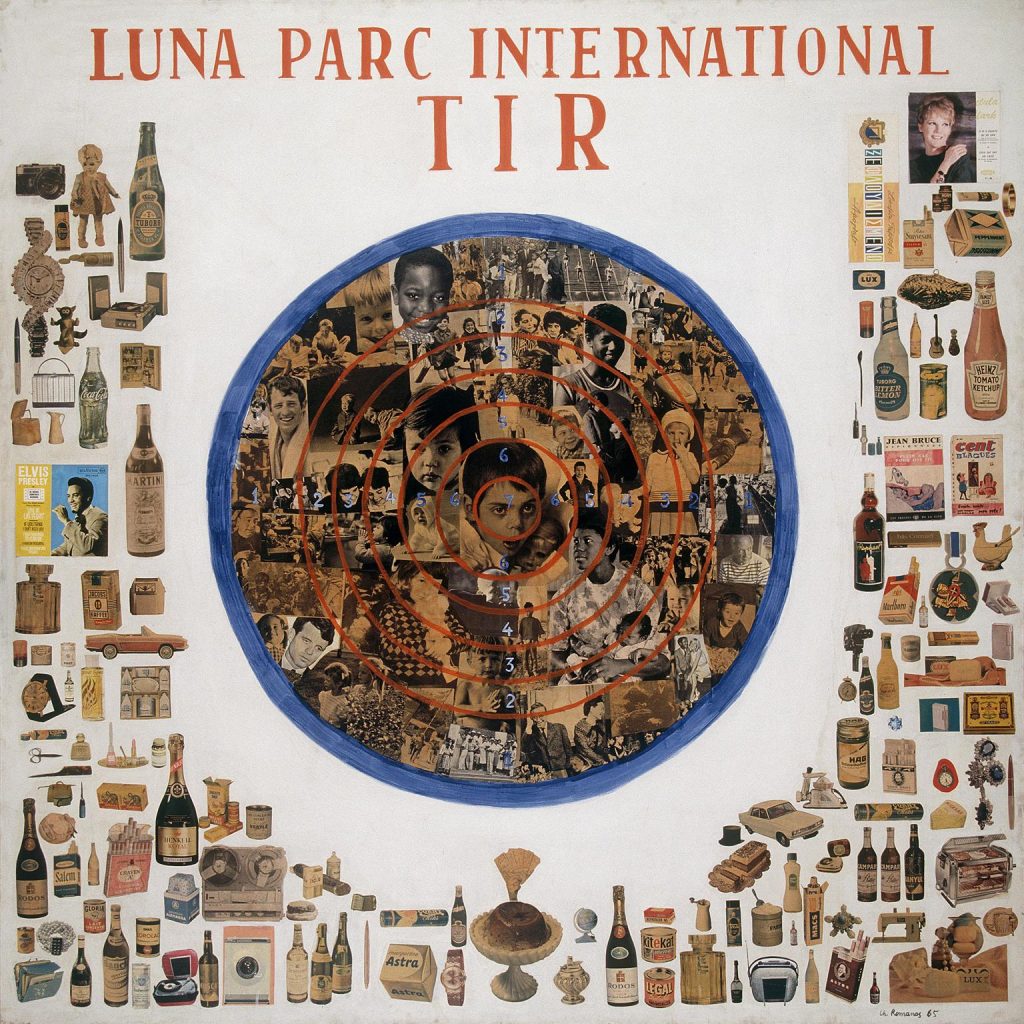
Chryssa Romanos, Luna Park International
The Search for Happiness for as Many as Possible a curation by Eleni Koukou and Dimitris Tsoumplekas, features Romanos’ artworks within their historical, political, and social contexts spanning all periods of her oeuvre. Romanos’ artistic expression has been characterized by open-ended narrative structures, mechanical reproduction, randomness, transparency, and the notion of play. The exhibition’s title emphasizes on the emotional and political dimensions of Romanos’ work drawing inspiration from a text by the distinguished French theorist Pierre Restany. The exhibition will be open to the public until October 27.
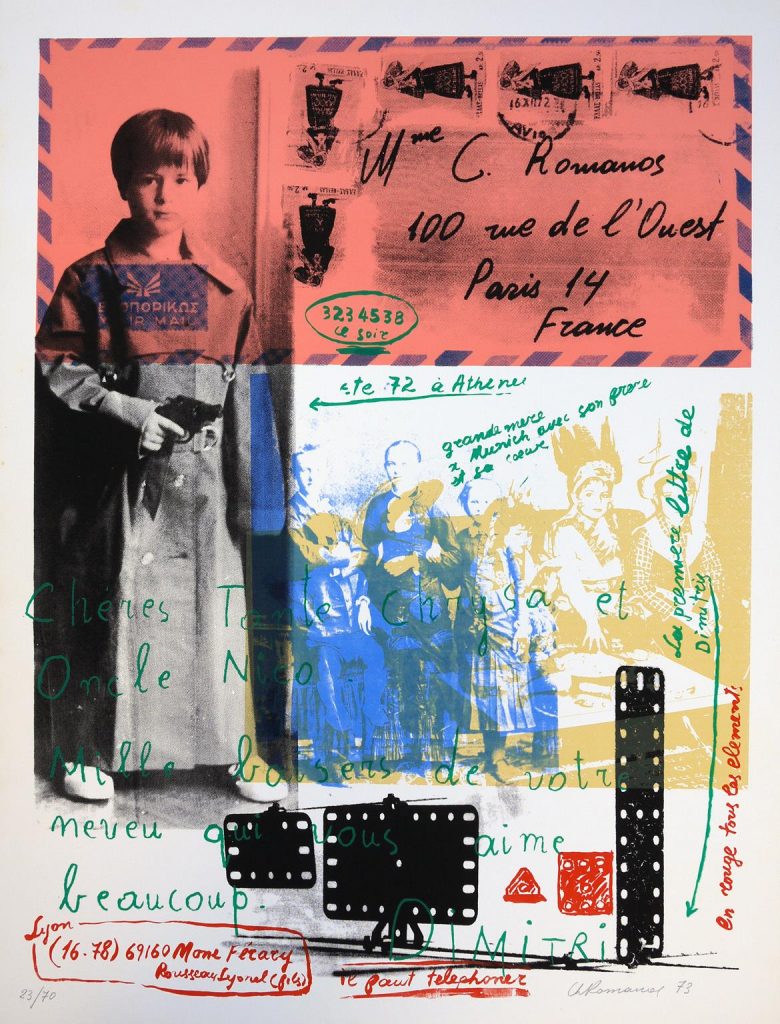
Chryssa Romanos Serigraphy from the folio Some Pages from a Diary, 1973, 65 x 50 cm
“Time in my hands” by Leda Papaconstantinou
Time in My Hands available until March 21, is the first major retrospective exhibition on Leda Papaconstantinou (born in 1945) one of the most important and influential artists in the history of Greece’s contemporary art. Papaconstantinou’s experimental work is mainly centered on the body and seeks to explore issues of gender, sexuality, collective and personal memory, politics and ecology among other topics.
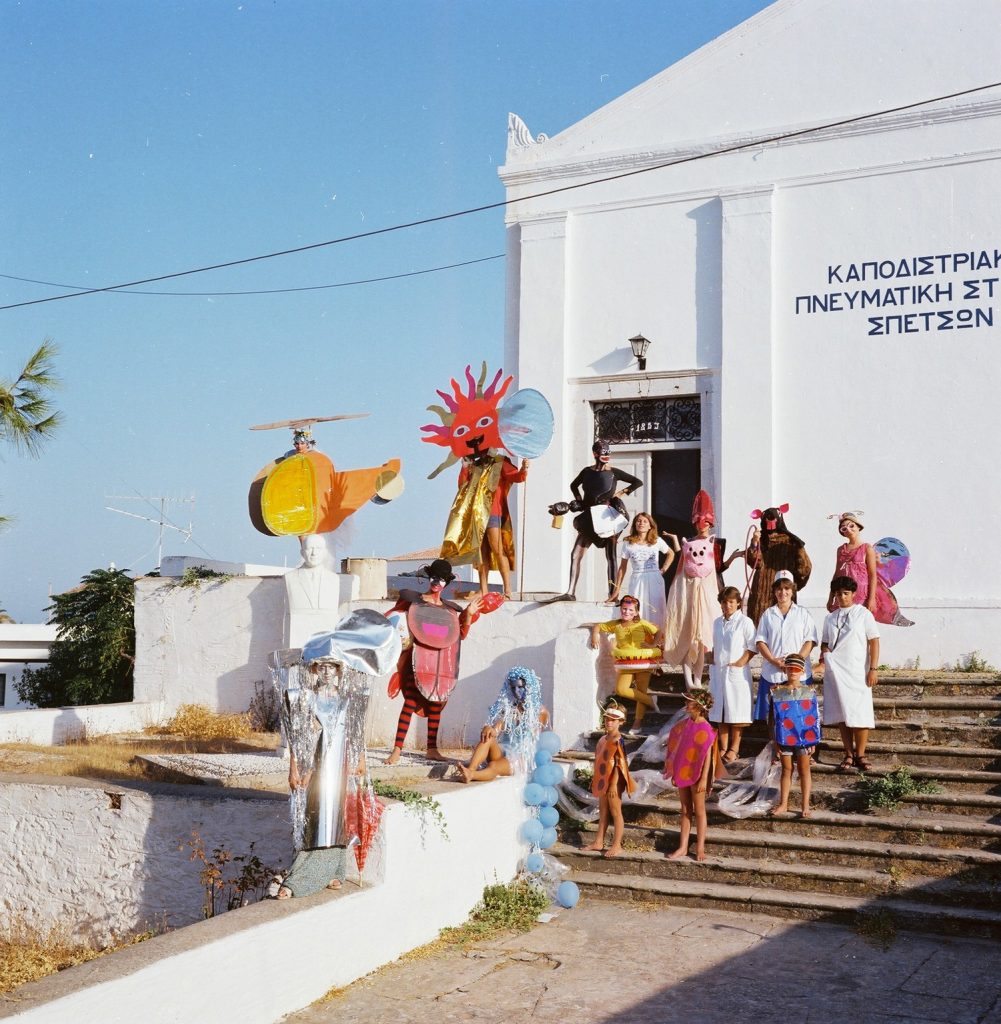
Leda Papaconstantinou
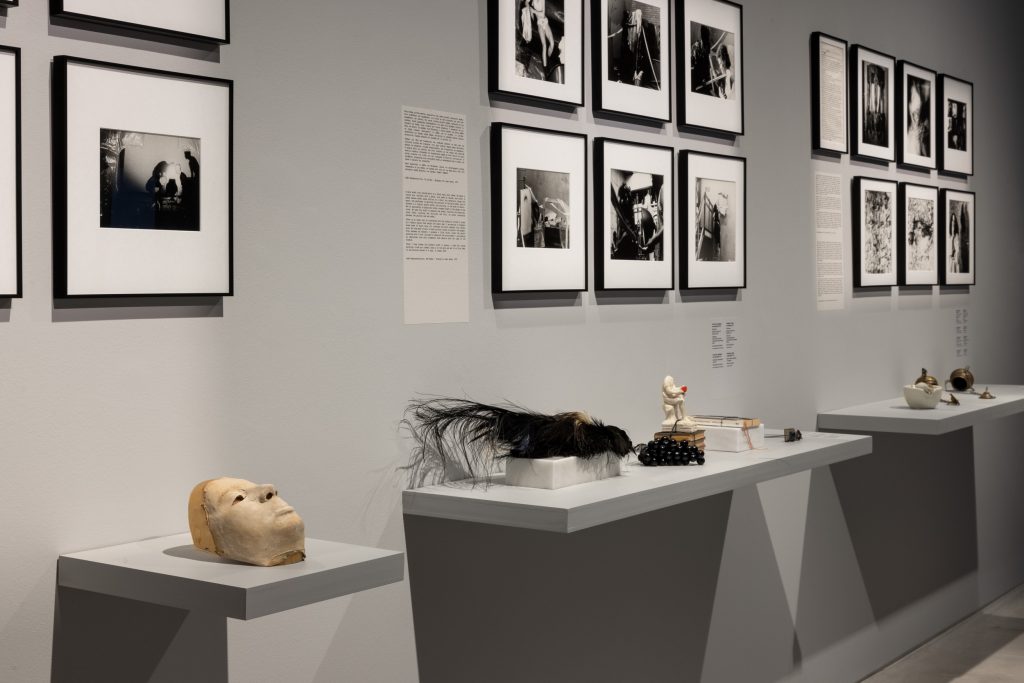
Performances 1969-1971. Installation view of the exhibition: Time in my Hands. Leda Papaconstantinou. A Retrospective Photo: Paris Tavitian
Featuring a large number of installations, paintings, sculptures, audio-visual and audio pieces along with unpublished photographic and textual archival documents, Tina Pandi in her curation highlights the importance of Papaconstantinou’s body of work both in its original time and today.
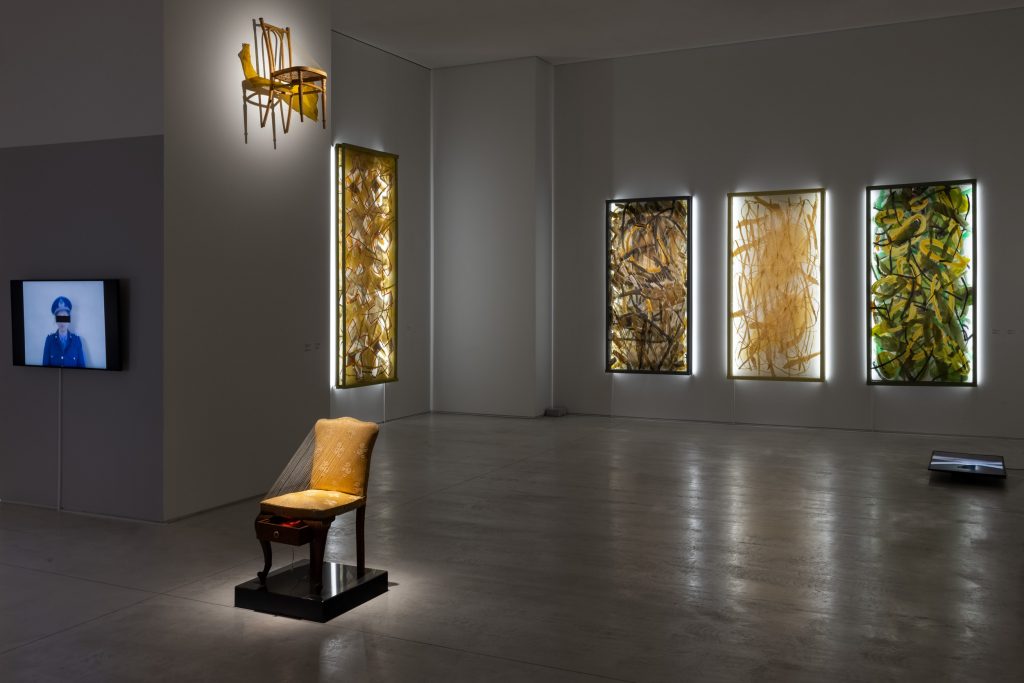
Installation view of the exhibition: Time in my Hands. Leda Papaconstantinou. A Retrospective Photo: Paris Tavitian
“D Possessions” by Danai Anesiadou
Danai Anesiadou’s first solo exhibition in Greece D Possessions features her personal and metaphysical concerns as expressed in her body of work over the last fifteen years. With references mainly to cinema Greek antiquity, surrealism, and occult sciences the Belgian-Greek artist challenges our notions of truth, exposing the double standards of the dominant discourse. In her attempt to understand and reflect on the present but also avoid binary thinking Anesiadou questions everything by juxtaposing seemingly unrelated elements, suggesting a reconsideration on the established perspectives.
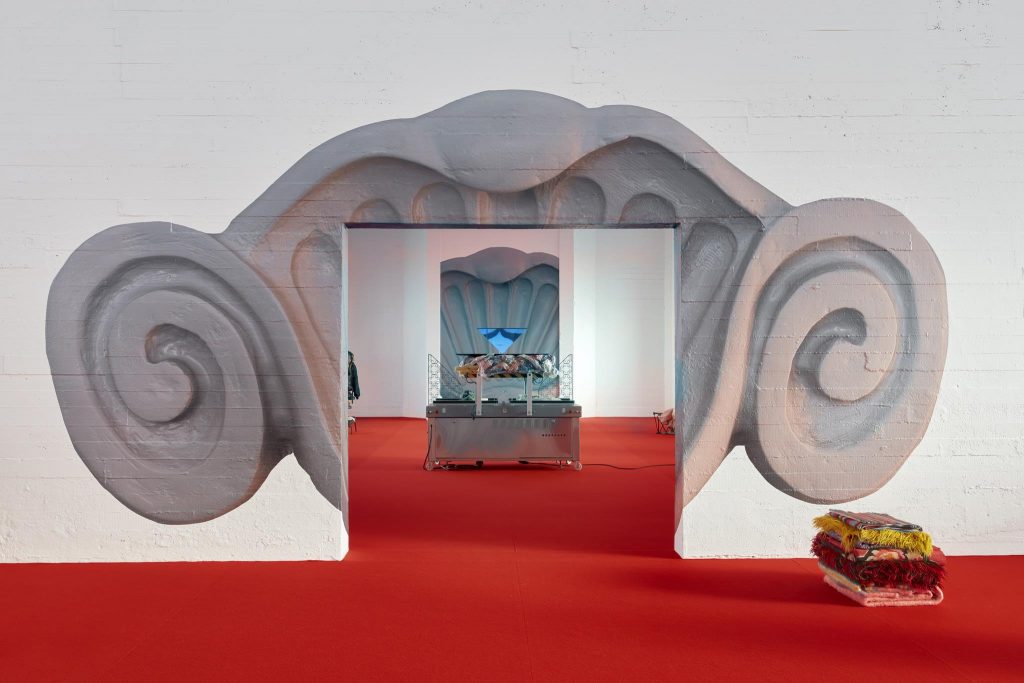
Installation view, Danai Anesiadou, D POSSESSIONS, 2023 at Wiels Contemporary Art Centre, Brussels (front to back): Ambiguous Angles, 2023; Vacuum, 2023. Courtesy of the artist Photo: we document art
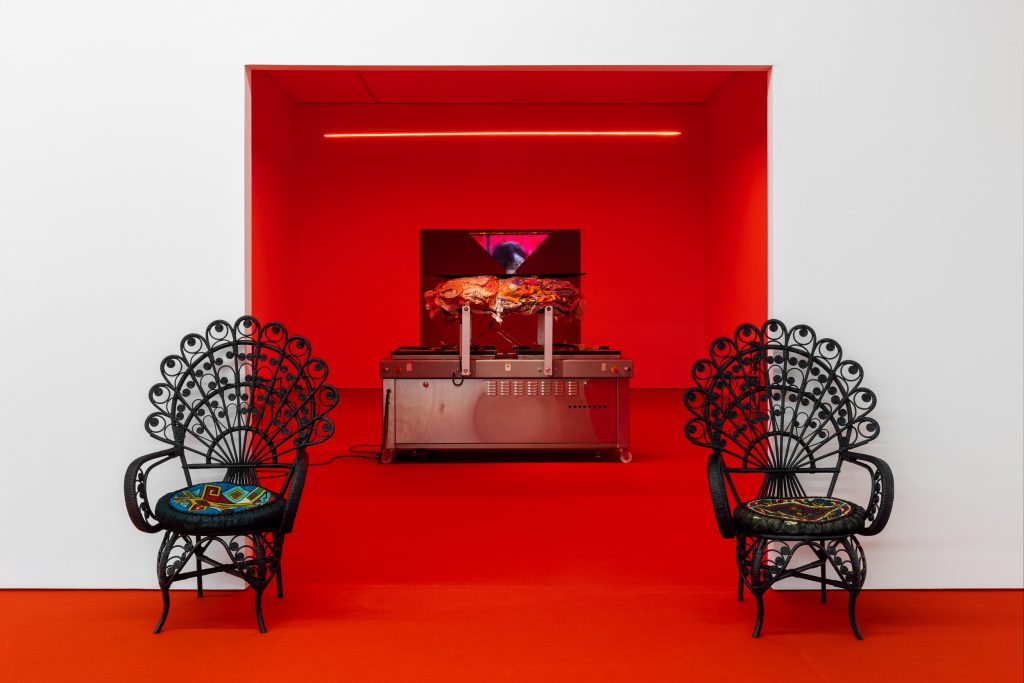
Installation view: Danai Anesiadou, D POSSESSIONS at ΕΜΣΤ | National Museum of Contemporary Art, Athens Photo: Paris Tavitian
With an allegorical scenography curated by Ioli Tzanetaki, Anesiadou attempts to transform her personal belongings and the energies they carry in a kaleidoscopic exhibition that brings a socio-political comment and senses of uncanny and the surreal. The exhibition will be open to the public until October 27.
Part II of “What If Women Ruled the World”
On March 9, the National Museum of Contemporary Art will host the second part of the exhibition series “What if Women Ruled the World?” presenting individual exhibitions of seven women artists. This exhibition features the works of Iranian-born American artist Tala Madani, Moroccan visual artist Buhra Kalili, the American photographer Lola Flash, Greek visual artist Malvina Panagiotidi, Swiss visual artist Claudia Comte, Israeli artist and filmmaker Yael Bartana, Dutch-Indonesian Hadassah Emmerich.
Part III of “What If Women Ruled the World”
The third part of the program arrives on May 11 with a retrospective exhibition dedicated to the work of Penny Siopis, an artist born in South Africa to Greek parents, known for her active stance on women’s rights and resistance against apartheid, as well as the work of the French artist Bertille Bak and the Greek artist Eva Stefani.
